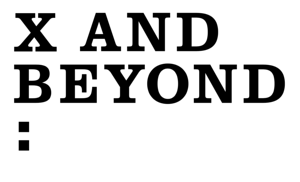March 31–July 2, 2017
It is clear that the Fukushima nuclear catastrophe is one of the most critical ongoing crises of the twenty-first century. Unlike conflict and natural disaster whose temporality is defined by a rupture followed by processes of reunion and reconstruction, the time of nuclear catastrophe suspends these processes. 100,000 former residents displaced in a chasm of dead time pending the countdown of half-lifes in order to resume a future. The specter of concentrations of radioactive particles entering daily life marks a new era that demands new ways of living and working.
This ongoing crisis has lead to a profound cultural shift in Japan. The previous societal compromise of governance in exchange for safety and stability broke. In its wake grew the first social movements since the 1960s and the start of an awakening of broader political engagement. Fomented by and extending through culture, many artists, musicians, and writers organized the initial protests and practices radically changed in response to this new era.
If only radiation had color. The Era of Fukushima is the first large-scale survey outside of Japan of artist practices confronting this new horizon of half-lifes. Unfolding in three propositions, the project works with a new generation of artists in Japan deeply influenced by the catastrophe and developing distinct ways of navigating this unfolding precarious world.
Proposition 1. Human Landscapes
March 31–April 23, 2017
The nuclear anthropocene has deeply changed the relationship with the environment and everyday activities such as buying food, drinking water, and notions of hygiene. Within this altered terrain, practices intervened in landscapes and worked with the affected communities to find new proposals for modes of negotiating the social and material realities.
Chim Pom, Bontaro Dokuyama, Hikaru Fujii, Kyun-Chome, Nobuaki Takagawa, Tadasue Takamine, Kota Takeuchi
Proposition 2. Collective Dissent
April 27–May 21, 2017
Proliferating forms of collective organizing and individual actions have blossomed. Many artists formed and worked with occupations, protests, and direct action. While others developed a language of revolt and social critique. These activities have had lasting effects in developing social movements in other areas of society and mark an important turning point in Japan.
Amateur Riot, Finger Pointing Worker, Chim Pom, Hikaru Fujii, Yuta Hirai, Nobuaki Takegawa
Proposition 3. Future Infrastructure
May 26–July 2, 2017
Self-organization and working toward imagining different futures - while experimenting in pre-figurative practices—have produced radically different notions of what the future can be. Struggling against the precarity of the present, they are developing futures characterized by translocal affinity, self-governance, and new shapes of sustainability.
Don’t Follow the Wind, Yuta Hirai, Kyun-Chome, Kyohei Sakaguchi, Akira Takayama, Koki Tanaka, UNITED BROTHERS, Fuyuki Yamakawa
Curators: Kenji Kubota, Jacob Lillemose, Jason Waite
Activism and Art in the Era of Fukushima
May 27, 2017
2–6pm
Opening up a new period of activism and social movements, the conference explores Fukushima as an important turning point in Japanese culture. Theorist and writer Sabu Khoso locates the catastrophe in a broader context of economic-social crisis in Japan and emerging strains of self-organized resistance. Artists Nobuaki Takegawa, Kota Takeuchi, among others discuss the new relationship that has emerged between activist and cultural practices, through the shifts in their own ongoing work. At the present moment when a new types of fascism are emerging elsewhere in the world, what forms of knowledge and strategies can be shared to allow a broader translocal affinity.
This project constitutes a provisional conclusion to the activities at the non-profit exhibition space X AND BEYOND. Since the spring of 2015, it has run a multidisciplinary program focused on disasters and their impact on humans, societies, and beyond as reflected in art and popular culture. Founded by curator Jacob Lillemose, beginning in the fall of 2017 X AND BEYOND become a nomadic curatorial project.


